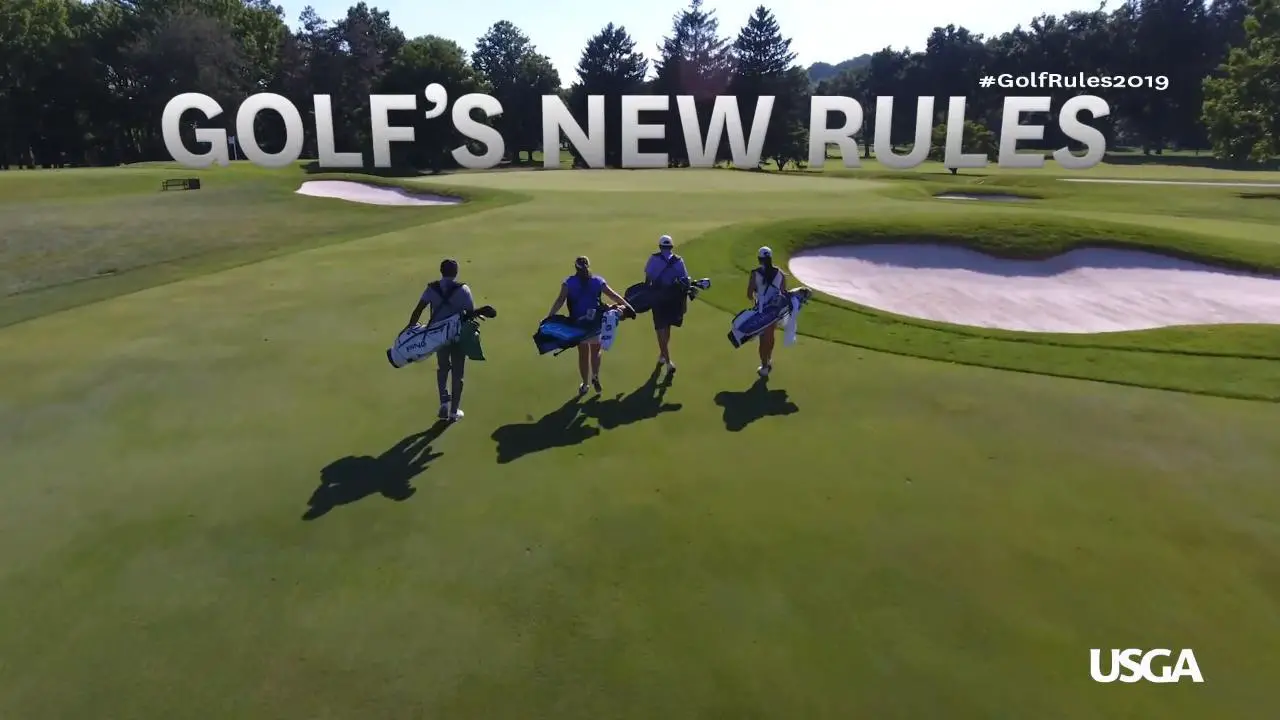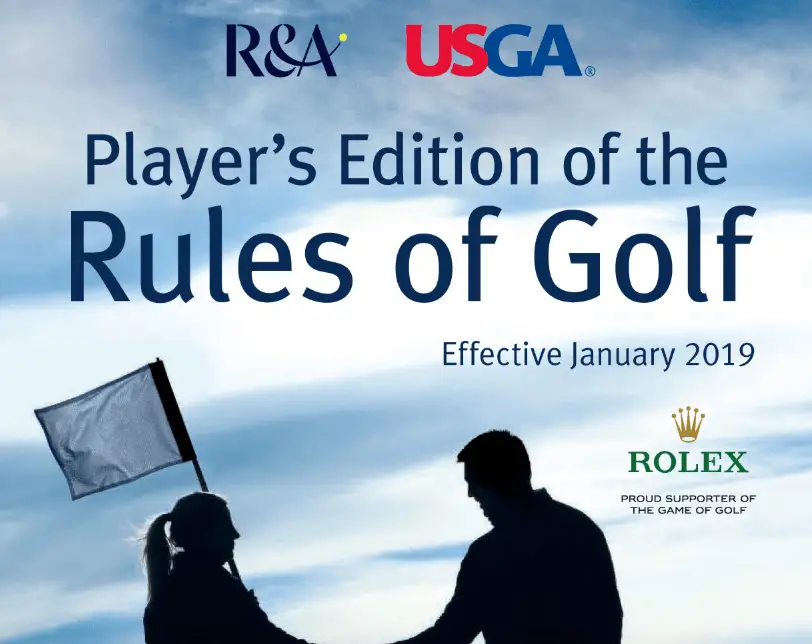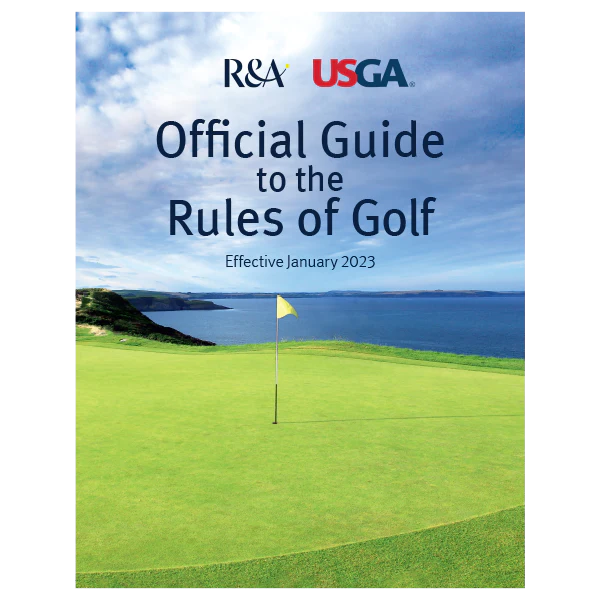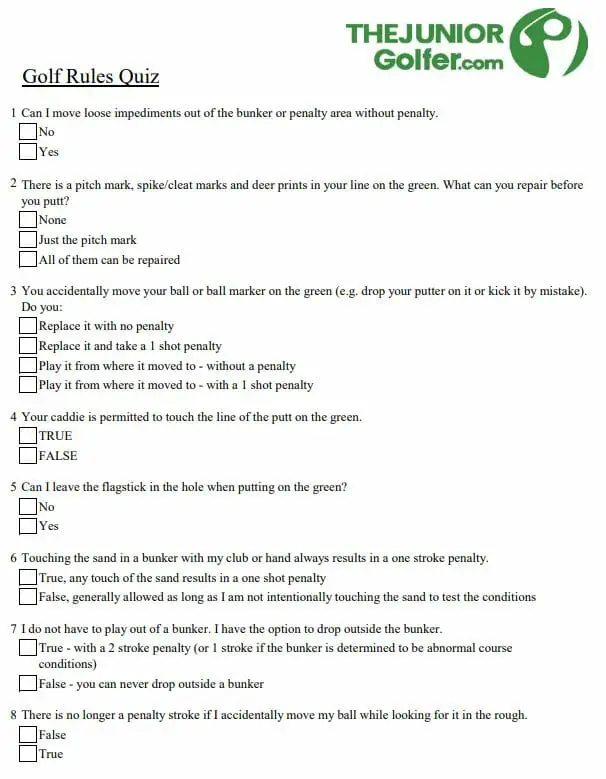The Golf Rule Changes...
So why did the USGA and R&A (golf world golf governing bodies) decide that a change to the rules was needed? Apart from being somewhat outdated, current golf rules are often difficult to understand and certainly don't necessarily encourage fast rounds - a major problem facing the future of golf! The 2019 new golf rules address all these issues.
The rule changes were a collaborative effort between the USGA and the R&A with a lot of input from golf professionals and amateurs alike. Both Thomas Pagel, USGA Senior Director of Rules & Amateur Status and David Rickman, Executive Director of Governance at The R&A, have expressed their satisfaction with the collaborative effort in publishing the new golf rules.
In general the rules have been relaxed and are designed to speed up play. There are a lot of changes and we designed a fun quiz to test your knowledge of the new golf rules. BEWARE, however, this is not an easy quiz - very few will get 100% or perhaps even a passing grade!
For easy reading, we have summarized the major changes and the new golf rules in the table below. If you want to read the full version of the new golf rules you can download them here: The Rules of Golf for 2019.
If you are interested in understanding the reasons for each change we recommend this article: Explanation for Each Major Change in the New Golf Rules for 2019.

New Golf Rules Quiz
Take our golf rules quiz to see how well you know what is changing!
Note - it will help a lot if you read the new golf rules summary below before taking this quiz, it is not easy!
2019 New Golf Rules Summary
Ball At Rest | New / Old Rule |
|---|---|
You accidentally move your ball during a search for it. | New rule: No penalty. Old rule: 1 stroke penalty. |
You accidentally move your ball or marker on the green. | New rule: No penalty. Old rule: 1 stroke penalty (with exceptions) |
How to decide if the player caused their ball to move. | New rule: Must be known or virtually certain (at least 95% certainty). Old rule: Must be more likely than not (50%). |
How to replace a ball (not on the putting green) when it moves and its exact original spot isn’t known. | New rule: Replace the ball on its estimated spot; if that spot was on, under or against attached natural objects, replace the ball on that spot on, under or against those objects. Old rule: Drop the ball as near as possible to the estimated spot. |
Marking and lifting a ball to identify it, check for damage or see if conditions allow relief (e.g. if embedded). | New rule: Player no longer has to announce what they are doing and provide an opportunity for other player(s) to observe. Old rule: Had to announce intention to lift the ball and provide the opportunity to observe. |
Ball in Motion | New / Old Rule |
|---|---|
Ball accidentally hits the player, their caddie, their equipment, the flagstick, another person etc. | New rule: No penalty. Old rule: 1 stroke penalty (2 strokes if it hits the flagstick or the attendant). |
Accidental double hit. | New rule: No penalty. Old rule: 1 stroke penalty |
Taking Relief / Dropping | New / Old Rule |
|---|---|
Where to drop from a penalty area (hazards are now called penalty areas). | New rule: Ball has to be dropped in a defined "relief area" that is measured using any club in the players bag other than the putter. Old rule: The putter could be used for measuring a dropping area thus giving a player with a long putter an unfair advantage. |
How to drop the ball. | New rule: Drop from knee height (ball cannot hit the player or their clothing). Old rule: Drop from shoulder height. |
Time allowed to search for a lost ball. | New rule: 3 minutes. Old rule: 5 minutes. |
Changing balls. | New rule: Allowed to change balls anytime relief is taken. Old rule: Must use original ball except if taking penalty relief. |
Relief from embedded ball. | New rule: Relief available anywhere in the "general area" (new term for "through the green"), unless local rules state otherwise. Old rule: Relief only available on fairway or areas cut to fairway length or less. |
On the putting green | New / Old Rule |
|---|---|
Replacing the ball if moved inadvertently or by nature, after being lifted, cleaned and replaced. | New rule: Ball has to be replaced in the original spot. Old rule: In certain circumstances the ball could not be moved back to the original spot. |
Repairing damage on the putting green. | New rule: Spikes marks, animal damage etc. can be fixed (cannot fix natural imperfections such as bumps or hollows). Old rule: Could only repair a ball pitch mark or old hole plugs. |
Touching the line of the putt on the green. | New rule: Allowed as long as it does not improve the conditions. Old rule: Not permitted (loss of hole/2 stroke penalty) |
Penalty Areas & Bunkers | New / Old Rule |
|---|---|
Increase in areas that can be marked as penalty areas allowing a drop with 1 stroke penalty. | New rule: Any area such as rock beds, desert, thick bushes etc. can be marked as a penalty area. Also, water hazards can be marked red instead of yellow regardless of specific hole conditions. Old rule: Only water hazards could be marked as red/yellow penalty areas. Water hazards had to be marked yellow unless it was not possible or unreasonable to drop behind the hazard. |
Removing loose impediments, grounding the club or touching the ground in penalty areas. | New rule: Now allowed. Old rule: Not permitted (loss of hole/2 stroke penalty). |
Player touches bunker sand with club or hand. | New rule: Allowed if not testing the conditions. Not allowed to touch sand immediately in front or behind ball, while taking a practice swing, or on the backswing. Old rule: Not permitted (loss of hole/2 stroke penalty). |
Taking relief from a bunker. | New rule: Allowed to take relief on line behind the bunker, subject to a 2 stroke penalty. Old rule: Not allowed to take relief from a bunker (other than stroke and distance option - i.e. from place of last shot). |
Damaged Clubs | New / Old Rule |
|---|---|
Use of a damaged club during play. | New rule: Allowed, no matter the cause of the damage. Old rule: Only allowed if club was damaged "in the normal course of play." |
Replacing a damaged club during a round. | New rule: Allowed if the player was not responsible for the damage. Old rule: Allowed if damaged "in the normal course of play." |
Advice / Help from Caddie | New / Old Rule |
|---|---|
Caddie standing behind player to help with alignment. | New rule: Not allowed to stand on/close to extended line of play while player is taking stance. Old rule: Allowed but had to move away before stroke was made |
Caddie marks, picks up and replaces ball on green. | New rule: Allowed and caddie does not need specific authorization from player. Old rule: 1 stroke penalty if not specifically authorized by player. |
In addition to the new golf rules outlined above, the rules also include new guidelines that are intended to improve the pace of play. These include the use of rangefinders (now always allowed unless local rules say not, instead of the other way around), recommended time to play ball of 40 seconds or less, and playing ready golf.
The new golf rules now also recognize an alternative scoring for stroke play, where a maximum number of strokes per hole is defined (e.g. double par, 3 over, net bogie etc.). This alternative scoring would have to be set by the Committee.
The new rules golf also provide Committees the ability to disqualify players for a serious breach of etiquette or impose stroke penalty or loss of hole for lesser breaches. Previously the Committee only had the ability to disqualify players for a serious breach.
Conclusion
We believe the new rules will achieve their objectives and we are hopeful that courses will adopt these as much as possible (e.g. take advantage of the ability to mark areas a penalty instead of OB). We also hope that junior golf tournaments and club tournaments will embrace and use the new rules as much as possible.
Let us your thoughts on the quiz!





